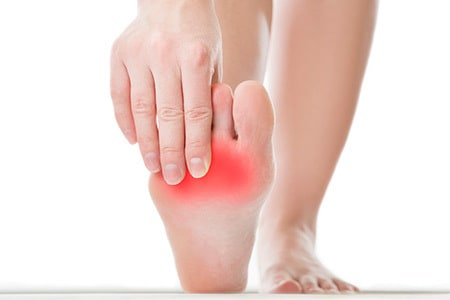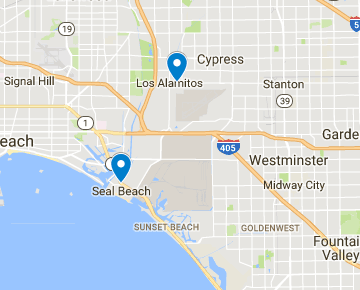Big Toe Joint Pain: Sesamoiditis

Unless you’re a dancer, climber or sprinter, there’s a good chance that you may not have heard of this foot problem. But for certain athletes (or anyone else who might repetitively use the big toe joints with high pressure), this inflammatory condition can bring careers or hobbies to a halt.
Sesamoid-what?
The sesamoids (bones) are embedded in the tendons and act as a pulley to allow movement in the big toe joint. It can also help to absorb impact from the rest of the midfoot while jumping or running.
Sesamoiditis (try to pronounce it phonetically, and slowly), then, is a condition that affects the sesamoid bones, tendons, and/or other soft tissue surrounding the big toe joint. When the sesamoids are injured or inflamed while performing activities that put pressure on the ball of the foot, the symptoms can include swelling, bruising, stiffness, and pain. The most telling sign of a fractured or broken sesamoid bone is when you cannot put any weight on the big toe joint or ball of foot at all.
How is it treated?
Types of injury:
- Overuse Injury: When an athlete repetitively performs an action involving high pressure on the big toe joint, the repeated motion can cause inflammation or irritation to the tendons. The pain can become worse, the more you train. That’s why it’s important that you stop practicing as soon as you feel symptoms. Use the RICE method: Rest (stop practicing), Ice (apply cold compress), Compression (use compression socks or bandaging to apply pressure), and Elevate (try to place the injury above the heart or at least elevate on a chair as often as possible). This can help reduce pain and swelling at the big toe joint.
- Acute Injury: Right after a sudden injury, such as high impact from a sprint or blunt trauma to the area, use the RICE method (above). After symptoms have subsided, assess the sesamoid area to see if you still have pain. This could mean a more serious injury, like a fracture. If symptoms continue or get worse after the RICE method, see a foot doctor immediately.
Home treatments:
- In addition to the RICE method as described above,
- For mild symptoms, use extra cushioning (cotton padding or soft orthotic inserts) under the big toe joint to soften impact when walking around. Even walking can aggravate a mild injury, so it’s best to keep weight off the foot by using an assistive device (such as crutches).
If you suspect that you might have a sesamoid injury, especially if you cannot bear weight on the ball of the foot, see a podiatrist right away. Make an appointment today at Alamitos-Seal Beach Podiatry Group for treatment options after a thorough assessment. One of our board-certified podiatrists, Dr. Douglas H. Richie, Dr. Jeremy L. Cook, Dr. Faye E. Izadi will be happy to help at either of our Orange County offices in Seal Beach, CA and Los Alamitos, CA.





